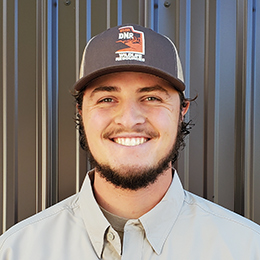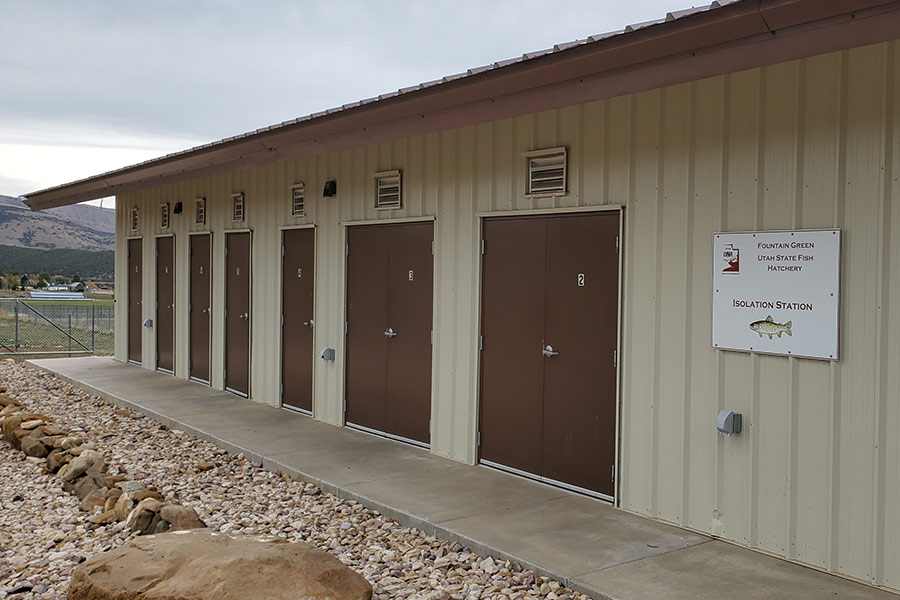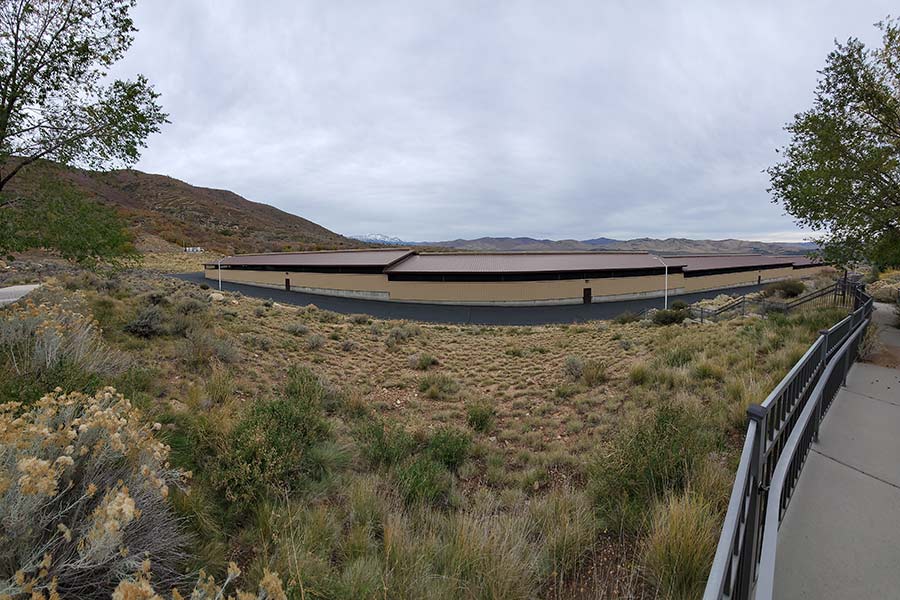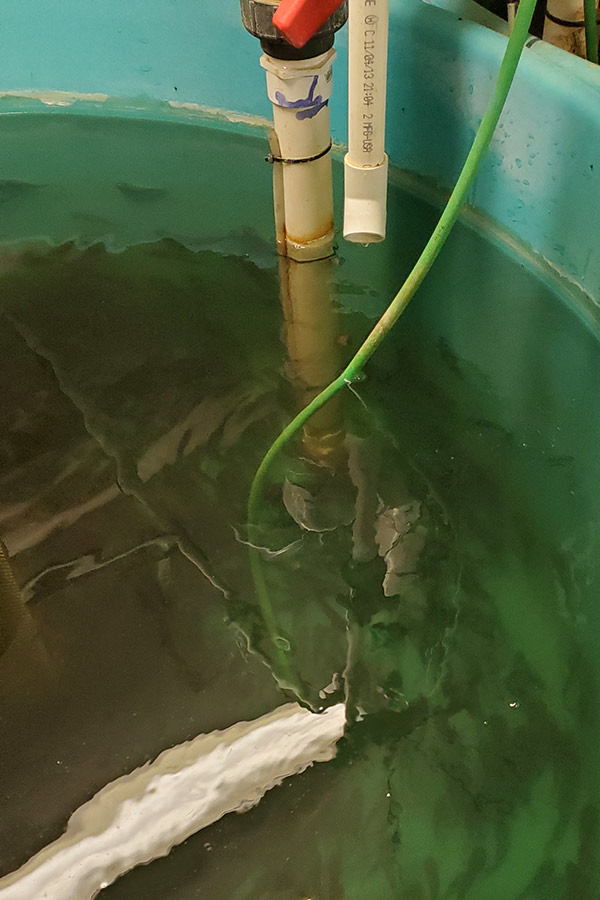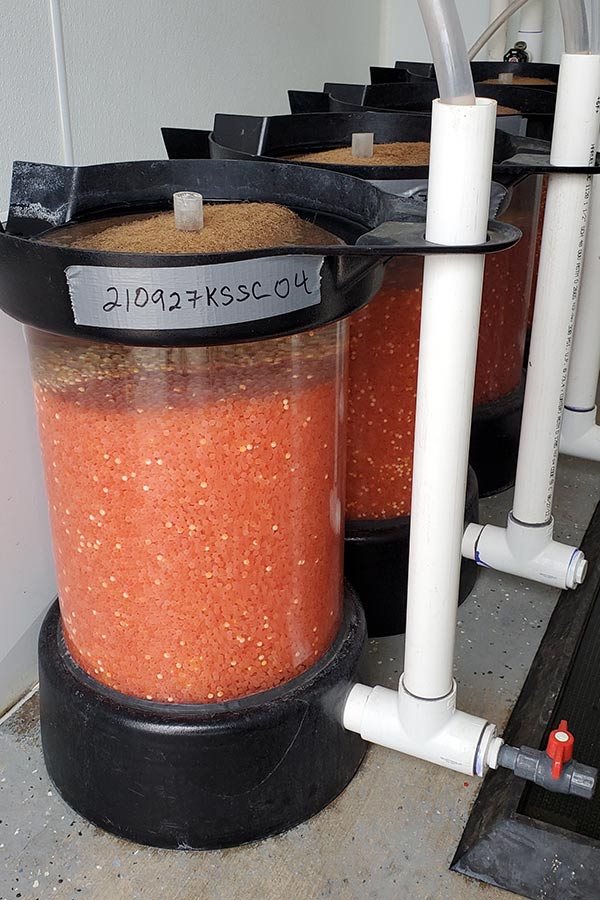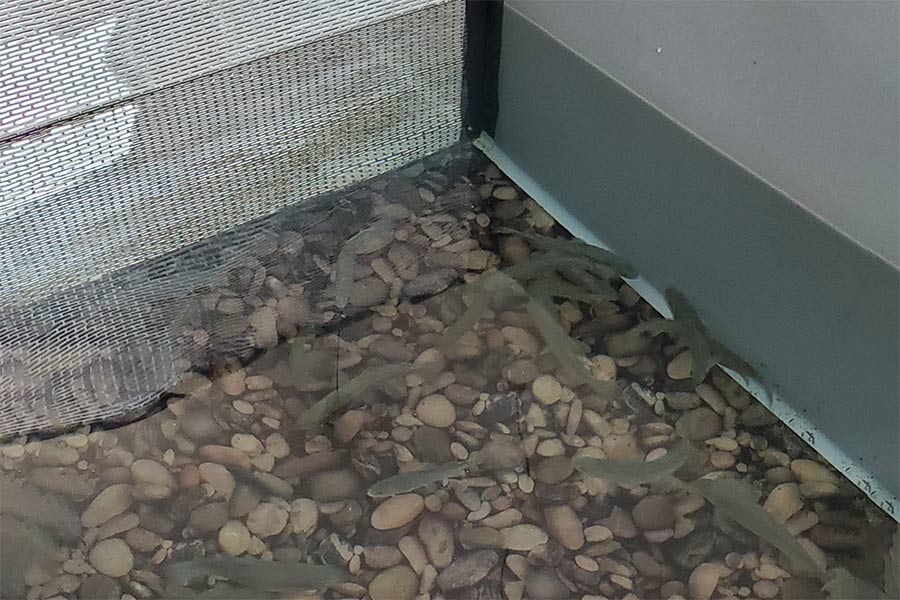Exciting fish culture projects at Fountain Green Fish Hatchery
This unique DWR facility raises both warmwater and coldwater species
Nick Wohlforth
Wildlife Biologist, Fountain Green Fish Hatchery
DWR Central Region
The Fountain Green Fish Hatchery is a hidden gem within the hatchery world. We're located in a small town with beautiful mountain views, yet we are only a scenic 35-minute drive to Utah County and city life. And there are several features specific to the Fountain Green operation that make it unique among the state's fish hatcheries.
We are primarily a coldwater fish hatchery — producing rainbow, cutthroat and tiger trout — but we also have a warmwater fish program and Utah's only fish- and egg-isolation facilities.
The scope of our work at the hatchery is fun, interesting, challenging and encompasses a vast variety of duties that change through the seasons.
Growing tiger muskie from start to finish
At the Fountain Green hatchery, we are able to raise and grow warmwater fish species, and one of our biggest projects each year is the tiger muskie spawn. From early March through the beginning of May, our staff assists in capturing northern pike from a few reservoirs in Utah and spawning them for eggs. We also go to the Lee Kay hatchery to spawn captive pike and true muskellunge to create the tiger muskie hybrid.
After we complete the entire spawning process, we take the fertilized eggs to the Fountain Green facility, where they eventually hatch. Our staff then grow the tiger muskie until they are big enough to stock in several Utah waterbodies.
Fountain Green is the only hatchery in the state that currently hatches and grows tiger muskie, although we sometimes send small Fountain Green tiger muskie to other hatcheries to grow and stock. In addition to tiger muskie, our warmwater facility grows catfish and has also grown bass in past years.
Spawning fish at the hatchery and in the wild
Another unique thing about the Fountain Green hatchery is that we participate in up to six different spawning events each year around the state.
In addition to working with the Lee Kay hatchery, we work closely with the Mantua and Egan hatcheries, which are also two of the DWR's brood facilities. We assist those hatcheries in spawning multiple trout species. For wild spawns — such as walleye, kokanee salmon and some northern pike — we collect eggs and milt (sperm) from fish right at the source: lakeside. At Willard Bay, we collect and spawn walleye, and we also grow kokanee salmon from eggs and milt gathered during the Strawberry Reservoir kokanee spawn.
All of these opportunities are different from each other and provide a unique learning experience. With each spawn, we learn more about various fish species and the processes needed to hatch, grow and release healthy fish.
Imagine a fish motel
Two fish culture programs are exclusive to the Fountain Green hatchery. We have the only egg-isolation station and fish-isolation facility in Utah. Both operations were created specifically for supporting the success of wild fish and their eggs. At all stages of their development, fish are sensitive to diseases and fungi, which are highly transmissible. By isolating different groups of fish or their eggs from each other, we can monitor, test and treat smaller groups of fish (or eggs) before diseases can spread.
At the isolation facilities, there is no access from one room to the next; you must exit to the outside before entering an adjacent room. Imagine the setup of a motel, but for fish or fish eggs. Additionally, the air from each room is filtered out using a positive pressure system, which keeps each room from being contaminated by another room's environment.
At the egg-isolation facility, eggs collected from most wild fish spawns are kept separate from eggs produced in the hatchery. The reason the eggs from wild spawns need to come to this building before distribution is to give our Fisheries Experiment Station time to test a sample of the ovarian fluid and eggs for diseases before the eggs are sent to one of our other hatcheries.
By doing this testing, we make sure our hatcheries don't get infected with diseases. Fountain Green staff care for the eggs until the disease certifications are complete and the eggs are mature enough to ship to another hatchery. Part of the care process is treating the eggs every day with formalin (an antiseptic) to kill any fungus that might build up in the eggs.
We then use an egg-picking machine to identify all of the dead eggs. This may not sound like a large task, but we currently have about 4 million kokanee salmon eggs that we have to pick through! If all of the machines are picking correctly, it takes us a few days to complete the process.
Supporting Utah's fish species in need of conservation
The fish-isolation facility was recently completed here at Fountain Green and is just getting up and running. It is constructed like the egg-isolation facility and has five separate rooms for fish tanks. The purpose of this facility is to support populations of Utah fish species that need additional conservation help. We collect wild fish and nurture them until we feel they are safe to return to the wild or until we create a broodstock. When we have a broodstock, we can spawn and raise those fish within the hatchery and help grow the population of a particular species.
For example, we currently have a very sensitive strain of cutthroat trout from a small creek near Moab called Beaver Creek. Biologists estimate that there are only 200 to 400 individuals left in the entire population of this specific strain in the wild, and we take care of 53 of these fish in the fish-isolation facility here at Fountain Green.
As Fountain Green staff, we have had to think outside of the box with this new facility, since it is the first program of its kind in the state of Utah. We have had to figure out how to get the wild Beaver Creek fish to eat, which has been a challenging process. And in the future, we will have to figure out the best and safest ways to spawn these fish.
Our learning curve for understanding how to best manage the fish-isolation facility and its capabilities is steep, but we are excited about the many opportunities this unique environment can support.
At the Fountain Green hatchery, we have a huge variety of work duties that change from season to season. Every day there is something fun and exciting to do!
